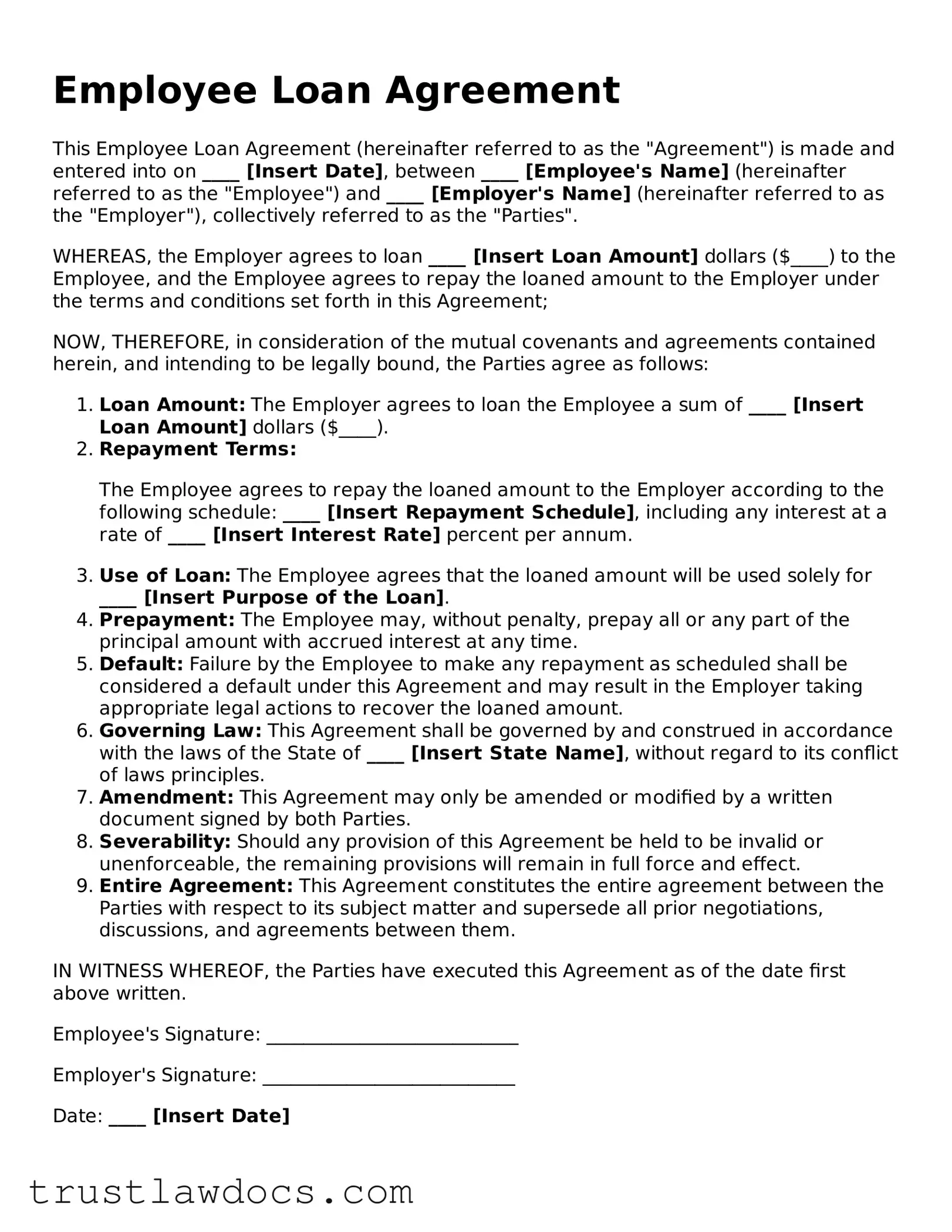The Promissory Note is closely related to an Employee Loan Agreement as both outline the terms under which money is borrowed and will be paid back. The key difference is that a Promissory Note is typically a more straightforward document, often used for more informal loans or personal loans between individuals. It sets out the repayment schedule, interest rate, and what happens in case of default, but may not include specific clauses related to employment as an Employee Loan Agreement does.
An Employment Agreement shares similarities with an Employee Loan Agreement in that both are formal contracts between an employer and an employee. However, an Employment Agreement focuses on the terms of employment, such as duties, salary, and duration, rather than loan details. The connection lies in the incorporation of clauses related to the loan directly into the Employment Agreement, thus binding the repayment terms to the tenure of employment.
A Personal Loan Agreement, much like an Employee Loan Agreement, is a formal contract between two parties regarding the borrowing and repayment of money. The main distinction is that Personal Loan Agreements are used between individuals who may or may not have an employer-employee relationship, making them more versatile for various personal lending situations. Both documents typically specify loan amounts, interest rates, repayment schedules, and consequences of non-repayment.
Debt Settlement Agreements share a common goal with Employee Loan Agreements: addressing and resolving the repayment of money owed. A Debt Settlement Agreement comes into play when the borrower is unable to meet the original repayment terms and seeks to negotiate a reduction or a new plan for repayment. While it also includes the amount owed and new terms of repayment, it is distinct because it signifies a modification to an existing repayment obligation, rather than setting out the terms of a new loan.
The Confidentiality Agreement, while not directly related to the financial components of an Employee Loan Agreement, often intersects in situations where sensitive information about the loan or the parties involved needs to be protected. Both agreements can include clauses that limit the disclosure of information related to the transaction and ensure that details of the loan, or any proprietary information shared as part of the employment relationship, remain confidential.
Last but not least, a Guarantor Agreement complements an Employee Loan Agreement by providing an additional layer of security to the lender. In cases where there's uncertainty about the employee's ability to repay, a guarantor commits to fulfilling the repayment obligations if the primary borrower fails to do so. This agreement is tied to the Employee Loan Agreement through the guarantor's promise, adding reassurance for the lender by involving a third party as a safety net.
